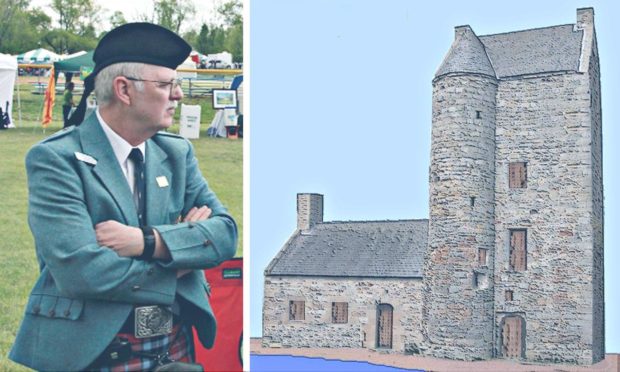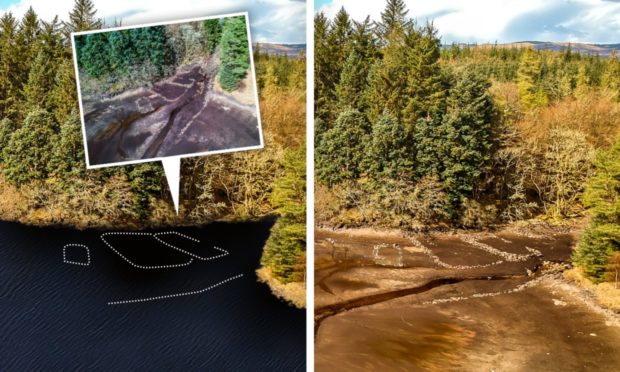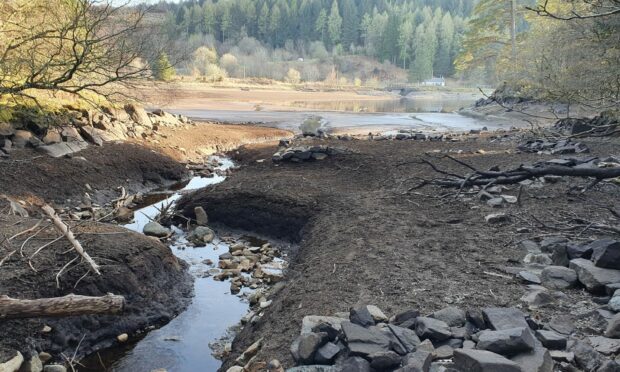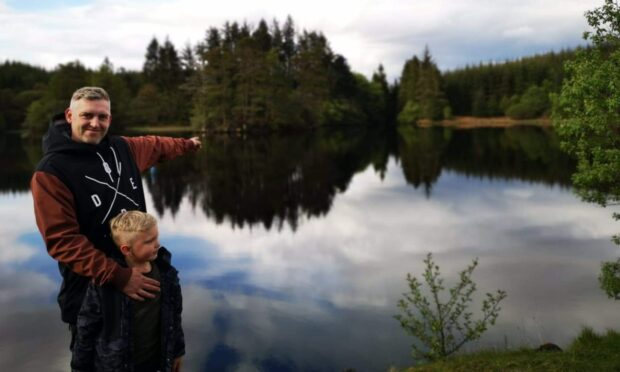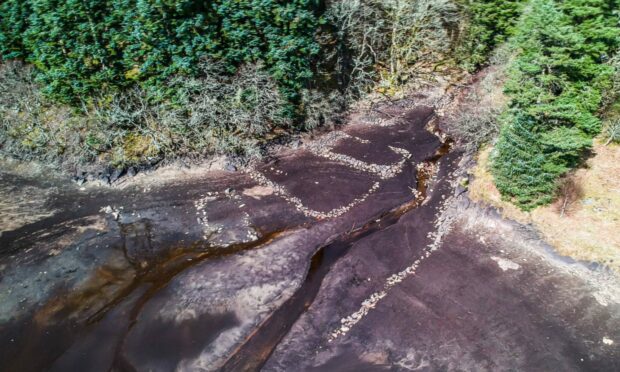A clan historian has brought a ruined castle back to life after studying its foundations when they became visible for the first time in centuries.
Maintenance work on the Crinan Canal in Argyll earlier this year revealed the remnants of the former seat of the Clan MacTavish.
Loch a’Bharain, a freshwater loch which is used to feed the canal at Dunardry, was drained during the winter months as part of a £4million facelift to improve safety at the scenic route.
It caused great excitement for clan members across the world, as it was a sight that no living person had ever laid their eyes on before.
It is believed that the last time these ruins were visible was before the loch was developed and flooded to build the canal more than 200 years ago.
From his home in Texas, clan seannachie (historian) Patrick Thompson created a visual interpretation of how he believes the castle would have looked before it became a ruin.
The Clan MacTavish stronghold
When the work on the canal was completed in May, the ruins disappeared under the murky waters of the loch once more.
But not before a visualisation of the castle could be captured in time.
Mr Thompson said: “I based the image of the castle on three things.
“Firstly, the measurements and survey taken by The West of Argyll Archaeology Service.
“Secondly, the images of the ruins at the loch, and thirdly, other small castle keeps that are present in Scotland.
“The size of the Dunardry Keep was not huge, but larger than thought, and I arrived at this conclusion while rendering my interpretation of the structure.
“Thinking on this since I did the illustration, it was probably an icehouse as it was much closer to the old loch’s shoreline (before it was rendered a reservoir), and would have afforded easy access for cutting and storing ice from the loch.”
Mr Thompson said the lower part of the structure probably served as a dining hall, with a bedroom for the chief and his wife also nearby.
The upper structure was likely a larder or kitchen.
He added: “As the illustration suggests, due to the limited size of the building, the tower is integrated into the storied wall structure as the limited size would not have permitted a free-standing tower.
“The aerial images did not show the remnants of a tower, however the archaeology report did mention the remnants of a superstructure, which I interpreted as a tower of some sort.”
Clan MacTavish history
Dunardry, between Lochgilphead and Crinan, was the site of the MacTavish stronghold for centuries.
For hundreds of years, the small castle, or keep, sat proudly by Loch a’Bharain (Loch of the Baron).
It was last inhabited by Lochlann MacTavish around 320 years ago, but was settled by MacTavishes as far back as 893AD, more than 1,000 years ago.
Today Loch a’Bharain is a reservoir for the Crinan Canal – which was built in 1809.
The loch adjacent to the canal was emptied for the first time in a long time, displaying the footprint of the ruins of the former castle.
Drone images taken while the loch was empty by local man William Holmes revealed a larger footprint than what was previously known to be there.
Not all of the footprint could be seen at that time, as much of it was under water.
